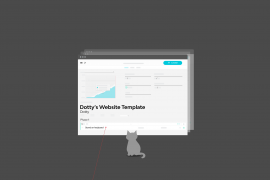Implementing a workflow tool can provide many benefits including increased productivity, better decision making, improved justification of your decisions and resources to management, and increased control over your resources. These deployments can be expensive—both in terms price and expended resources—and since switching costs are so high it’s important to get the vendor decision right the first time!
The critical key to selecting an appropriate workflow tool is to first clearly identify your requirements. This might seem obvious, but I see many clients skip this step and end up with a tool that is more or less than what they really need. Once your requirements are clear, you’ll need to navigate the many potential solutions available in the market. This can be a daunting task: if you include systems that have been created for other similar industries like consulting and IT management, there may be hundreds of potential systems. My advice is to concentrate on systems that have been created specifically for the creative industry.
Before evaluating specific systems, your first decision should be to determine which category of systems to evaluate. This is important because you want to evaluate systems with similar functionality, or you run the risk of wasting time evaluating inequitable, and potentially inappropriate, solutions.
I have categorized the creative-specific systems into five groups based on capabilities and price point.
- Workflow Components
These solutions are focused on one or more functions, such as collaboration, project data management, time entry, and may be used to build a custom system or to address specific needs. - Workflow Systems
These solutions are focused on managing workflows and scheduling but generally do not include job cost tracking, DAM and robust reporting options. - Project Management Systems (PMS)
Project management systems are focused on the needs of in-house creative groups and agencies that do not need accounting and media buying tools, and generally include time entry and reporting, workflow and scheduling, reporting tools, project data collection (“virtual job tickets”), digital asset management and more. Typically these solutions are a best fit for in-house creative groups of 20 or more people; that said, even smaller groups will receive immense value from these tools. - Agency Management Systems (AMS)
These systems are focused on the needs of agencies and usually include accounting and media buying in addition to project management tools listed in the PMS category. These systems are similar in price and functionality to PMS systems and also are an appropriate category for most in house creative groups. - Marketing Operations Management Systems (MOMS)
MOMS are enterprise-wide marketing and campaign management systems. They are generally purchased at the CMO level of an organization and are really designed to calculate marketing ROI across an enterprise. In order to do this they must also look at the cost of jobs so they may do many of the things in-house creative leaders need from systems as well. But that is not their main intent and therefore the tools aren’t a perfect fit for most creative teams.
To return to an earlier point, to compare a system in the Workflow Components category with one in the Project Management Systems category is like comparing apples to oranges—or more accurately comparing an apple to a fruit salad. The functionality a workflow tool can provide you is limited to one thing, whereas a PM system can provide you a suite of support. In addition, the “apple” costs one low price, but to buy the fruit salad, you need to spend more money. So your choice doesn’t become “which tool suits my needs,” it becomes “which is more important: cost or capability?” So what I am suggesting is to make that decision ahead of looking at specific tools—determine what is most important in your selection process and then look at several tools that can provide that value.
Once you have chosen what category of system you want to consider, how do you know what products exist and which you should evaluate? The most efficient and viable options are to speak with peers at forums like the Creative Executives Roundtables, “Beyond the Creative” and other industry conferences, by reading industry blogs like this one, participating in industry online discussion forums or by seeking the support of an creative-industry consultant (don’t ask your IT department/consultant!). Since it takes considerable time to do a full evaluation of potential tools, I would limit the number of systems to a manageable number such as three or four. I would allocate about 8-12 hours for a thorough tool evaluation— possibly more. If you evaluate three tools that’s about a week of time, and if you involve a team the hours can really add up.
I also think it’s important to create a scorecard. This helps keep you organized and provides an apples-to-apples measurement tool to evaluate performance on specific features of each system. It’s a good idea to have vendors self-access against the list of requirements (your scorecard) ahead of your review—if they indicate they don’t have a “critical” functionality that you’ve identified, you can avoid investing unnecessary time in evaluating their tool. In addition, when you’re in the process of evaluating a tool and the vendor has not demonstrated a certain capability they indicated as having, this will remind you to ask for that functionality to be demonstrated.
Once your scorecard/your list of requirements is prepared and you’ve identified a few vendors to evaluate request on-line product demos from the vendors to view the product and how it provides the specific functionality you require. This is a good opportunity to include other members of your team—be sure to include a good cross-section of your team (managers, individual contributors, video people, design people, editors, etc.). By involving this team in the selection process you help gain their buy-in which increases the probability of successful adoption. As time passes it becomes increasingly difficult to recall if any particular feature was demonstrated, therefore I highly suggest scoring the tool throughout and immediately following the demonstrations. But don’t be afraid to ask follow-up questions or to ask for additional demos of specific features that were not clearly demonstrated.
You haven’t reached the end of the selection process after viewing and scoring each of the products. Request each vendor to provide you with three client references—preferably from groups with similar sizes and compositions as yours and in like industries. A vendor will likely provide references they think will be favorable, but you can still gain good insight into general satisfaction, client service, downtime, and bugs.
The final step in choosing a system is to determine total costs, and calculate an ROI. When considering costs it’s important to consider software costs, vendor service fees, hardware costs and the cost of on-going support. Benefits are a bit more difficult to quantify. Look for a future blog on “Calculating ROI for Workflow Technology Projects” for a detailed discussion of this topic. After you have calculated an ROI the choice is usually clear on which system to choose because it takes both the costs and the benefits into account and provides a relative percentage for each of your choices.
The selection of a workflow tool vendor is a critical decision to ensure the successful implementation and adoption of a new system. While this can be a time consuming process the implications of making a wrong decision are great. It’s worth spending the time upfront to limit this risk.
Reproduced from Cella with permission, you can find the original blog post here. Image is Jonny Ford of Finger Industries UK – Streamtime user and design guru. For information about how the Cella team can support you in selecting and/or implementing a workflow tool, please email cella@cellaconsulting.com.








